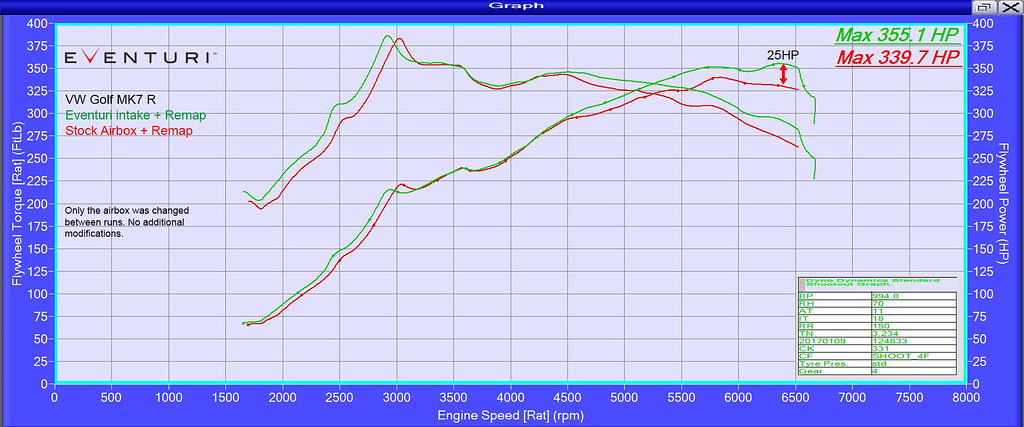The Audi S1 Eventuri intake has been developed to provide the most efficient and direct airflow path to the turbo. By replacing the OEM airbox with our Patent Pending Venturi housing we have ensured that the airlfow remains as laminar as possible. Furthermore, the addition of a true cold air feed by adding a scoop to the front grill results in the lowest possible inlet air temperature. The result is an optimised intake system which delivers noticeable performance gains consistently.
The Eventuri Difference
The Audi S1 system uses our Patent Pending Carbon fibre Housing which provides an aerodynamically efficient airflow path from the filter to the turbo tube. Not just another cone filter with a heat shield but a unique design which allows airflow to remain laminar and thus improve the turbo efficiency.
The standard airbox is cuboid in shape which gives rise to turbulence and increases the drag on the turbo as a result. The transition from the rectangular air filter to the round turbo inlet gives rise to inefficiencies in the flow path which are addressed with our Venturi housing system.
The following dyno graphs show the before and after results on a Golf 7 R (same engine as the Audi S1) which already had a remap. So both the stock airbox and the Eventuri were tested with the same remap in place. All tests were carried out back to back on the same day with the BONNET CLOSED ON ALL OCCASIONS.
The Eventuri Audi S1 intake system consists of a number of components engineered to perform a specific purpose and fabricated to the highest of standards. Here are the details for each component and the design ethos behind them:
Each intake system consists of:
- Prepreg Carbon Fibre Venturi Housing
- High Flow generation 2 Air Filter
- Aluminium Cowl for smooth airflow entry
- Laser Cut Intake Duct
- Laser Cut Cold Air
- Laser Cut Stainless Steel Brackets
Carbon Intake Housing

The filter housing comprises of a high flow filter, aluminium cowl, laser cut bracket and the carbon pod itself. The carbon pod shrouds the reverse mounted filter and smoothly shapes the airflow down to the intake tube. This smooth reduction in cross sectional area invokes the Venturi effect where the airflow accelerates whilst maintaining laminar conditions. It can be thought of as a large velocity stack - below is a diagram to show the comparison between our patent pending design and a regular intake system. Further details can be read in the Technology page. Our bespoke filters aid the airflow moving through the housings and allow for an even velocity profile as the airflow exits the housings. Further details can be read in the Technology and Filters pages.

Intake Duct

The duct replaces the stock rubber ducting and direct ambient air to the filter housing. It effectively blocks the heat from the engine bay and ensures that the air intake temperatures remain as low as possible.
Intake Scoop


The final part of the intake is the aluminium scoop which sits behind the grill and directs ambient air into the duct. Which the car is in motion, this scoop effectively forces air into the duct and by doing so displaces any ingress of hot air from the engine bay. By forcing air into the duct, the filter housing has a ready supply of ambient air and does not need to draw air from the front therefore the inlet track length is reduced.